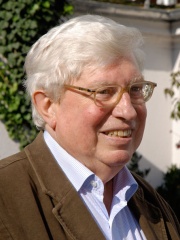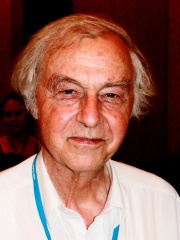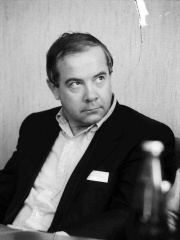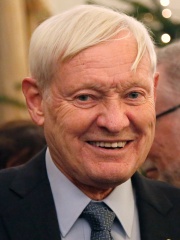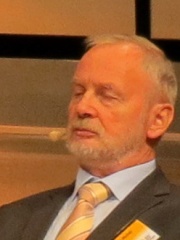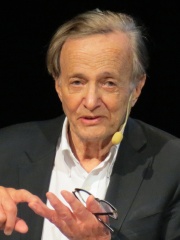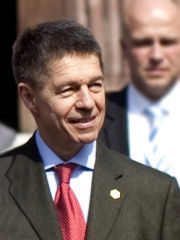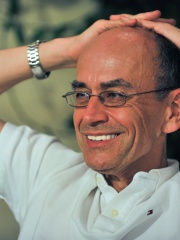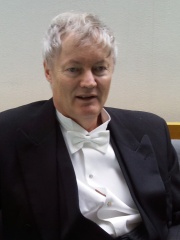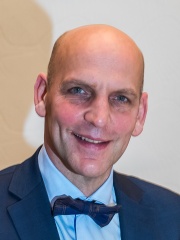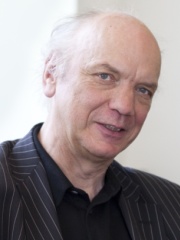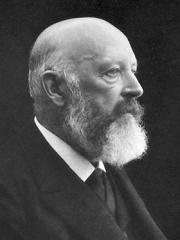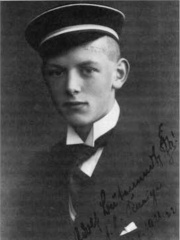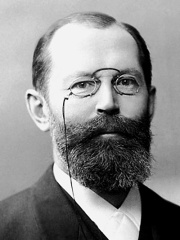

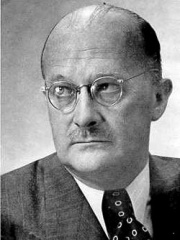
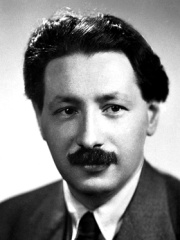
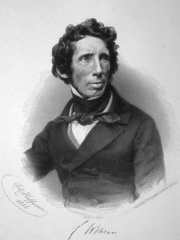
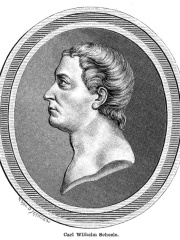
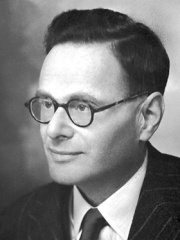
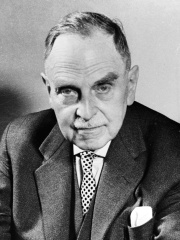
The Most Famous
CHEMISTS from Germany
Top 10
The following people are considered by Pantheon to be the top 10 most legendary German Chemists of all time. This list of famous German Chemists is sorted by HPI (Historical Popularity Index), a metric that aggregates information on a biography's online popularity. Visit the rankings page to view the entire list of German Chemists.

1. Emil Fischer (1852 - 1919)
With an HPI of 80.82, Emil Fischer is the most famous German Chemist. His biography has been translated into 86 different languages on wikipedia.
Hermann Emil Louis Fischer (German pronunciation: [ˈeːmiːl ˈfɪʃɐ] ; 9 October 1852 – 15 July 1919) was a German chemist and 1902 recipient of the Nobel Prize in Chemistry. He discovered the Fischer esterification. He also developed the Fischer projection, a symbolic way of drawing asymmetric carbon atoms. He also hypothesized lock and key mechanism of enzyme action. He never used his first given name, and was known throughout his life simply as Emil Fischer.

2. August Kekulé (1829 - 1896)
With an HPI of 79.36, August Kekulé is the 2nd most famous German Chemist. His biography has been translated into 62 different languages.
Friedrich August Kekulé, later Friedrich August Kekule von Stradonitz ( KAY-kə-lay, German: [ˈfʁiːdʁɪç ˈʔaʊɡʊst ˈkeːkuleː fɔn ʃtʁaˈdoːnɪts]; 7 September 1829 – 13 July 1896), was a German organic chemist. From the 1850s until his death, Kekulé was one of the most prominent chemists in Europe, especially in the field of theoretical chemistry. He was the principal founder of the theory of chemical structure and in particular the Kekulé structure of benzene.

3. Adolf Windaus (1876 - 1959)
With an HPI of 78.89, Adolf Windaus is the 3rd most famous German Chemist. Her biography has been translated into 62 different languages.
Adolf Otto Reinhold Windaus (German pronunciation: [ˈaːdɔlf ˈvɪndaʊs] ; 25 December 1876 – 9 June 1959) was a German chemist who won a Nobel Prize in Chemistry in 1928 for his work on sterols and their relation to vitamins. He was the doctoral advisor of Adolf Butenandt who also won a Nobel Prize in Chemistry in 1939.

4. Ernst Chain (1906 - 1979)
With an HPI of 78.79, Ernst Chain is the 4th most famous German Chemist. His biography has been translated into 61 different languages.
Sir Ernst Boris Chain (19 June 1906 – 12 August 1979) was a German-born British biochemist and co-recipient of the Nobel Prize in Physiology or Medicine for his work on penicillin.
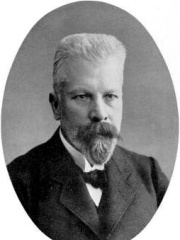
5. Eduard Buchner (1860 - 1917)
With an HPI of 78.78, Eduard Buchner is the 5th most famous German Chemist. His biography has been translated into 76 different languages.
Eduard Buchner (German: [ˈeːduaʁt ˈbuːxnɐ] ; 20 May 1860 – 13 August 1917) was a German chemist and expert on fermentation (sometimes called a zymologist), awarded the 1907 Nobel Prize in Chemistry for his work on fermentation.

6. Friedrich Wöhler (1800 - 1882)
With an HPI of 78.43, Friedrich Wöhler is the 6th most famous German Chemist. His biography has been translated into 63 different languages.
Friedrich Wöhler FRS(For) HonFRSE (German: [ˈvøːlɐ]; 31 July 1800 – 23 September 1882) was a German chemist known for his work in both organic and inorganic chemistry, being the first to isolate the chemical elements beryllium and yttrium in pure metallic form. He was the first to prepare several inorganic compounds, including silane and silicon nitride. Wöhler is also known for seminal contributions in organic chemistry, in particular, the Wöhler synthesis of urea. His synthesis of the organic compound urea in the laboratory from inorganic substances contradicted the belief that organic compounds could only be produced by living organisms due to a "life force" known as Vitalism . However, the exact extent of Wöhler's role in diminishing the belief in vitalism is considered by some to be questionable.

7. Carl Wilhelm Scheele (1742 - 1786)
With an HPI of 78.35, Carl Wilhelm Scheele is the 7th most famous German Chemist. His biography has been translated into 70 different languages.
Carl Wilhelm Scheele (German: [ˈʃeːlə], Swedish: [ˈɧêːlɛ]; 9 December 1742 – 21 May 1786) was a German-Swedish pharmaceutical chemist. Scheele discovered oxygen (although Joseph Priestley published his findings first), and identified the elements molybdenum, tungsten, barium, nitrogen, and chlorine, among others. Scheele discovered organic acids tartaric, oxalic, uric, lactic, and citric, as well as hydrofluoric, hydrocyanic, and arsenic acids. He preferred speaking German to Swedish his whole life, as German was commonly spoken among Swedish pharmacists.

8. Hans Adolf Krebs (1900 - 1981)
With an HPI of 78.34, Hans Adolf Krebs is the 8th most famous German Chemist. His biography has been translated into 63 different languages.
Sir Hans Adolf Krebs, FRS (, German: [hans ˈʔaːdɔlf ˈkʁeːps] ; 25 August 1900 – 22 November 1981) was a German-British biologist, physician and biochemist. He was a pioneer scientist in the study of cellular respiration, a biochemical process in living cells that extracts energy from food and oxygen and makes it available to drive the processes of life. He is best known for his discoveries of two important sequences of chemical reactions that take place in the cells of nearly all organisms, including humans, other than anaerobic microorganisms, namely the citric acid cycle and the urea cycle. The former, often eponymously known as the "Krebs cycle", is the sequence of metabolic reactions that allows cells of oxygen-respiring organisms to obtain far more ATP from the food they consume than anaerobic processes such as glycolysis can supply; and its discovery earned Krebs a Nobel Prize in Physiology or Medicine in 1953. With Hans Kornberg, he also discovered the glyoxylate cycle, a slight variation of the citric acid cycle found in plants, bacteria, protists, and fungi. Krebs died in 1981 in Oxford, where he had spent 13 years of his career from 1954 until his retirement in 1967 at the University of Oxford.

9. Otto Hahn (1879 - 1968)
With an HPI of 78.04, Otto Hahn is the 9th most famous German Chemist. His biography has been translated into 85 different languages.
Otto Hahn (German: [ˈɔtoː ˈhaːn] ; 8 March 1879 – 28 July 1968) was a German chemist who was a pioneer in the field of radiochemistry. He is referred to as the father of nuclear chemistry and discoverer of nuclear fission, the science behind nuclear reactors and nuclear weapons. Hahn and Lise Meitner discovered isotopes of the radioactive elements radium, thorium, protactinium and uranium. He also discovered the phenomena of atomic recoil and nuclear isomerism, and pioneered rubidium–strontium dating. In 1938, Hahn, Meitner and Fritz Strassmann discovered nuclear fission, for which Hahn alone was awarded the 1944 Nobel Prize in Chemistry. A graduate of the University of Marburg, which awarded him a doctorate in 1901, Hahn studied under Sir William Ramsay at University College London and at McGill University in Montreal, Canada, under Ernest Rutherford, where he discovered several new radioactive isotopes. He returned to Germany in 1906; Emil Fischer let him use a former woodworking shop in the basement of the Chemical Institute at the University of Berlin as a laboratory. Hahn completed his habilitation in early 1907 and became a Privatdozent. In 1912, he became head of the Radioactivity Department of the newly founded Kaiser Wilhelm Institute for Chemistry (KWIC). Working with Austrian physicist Lise Meitner in the building that now bears their names, they made a series of groundbreaking discoveries, culminating with her isolation of the longest-lived isotope of protactinium in 1918. During World War I Hahn served with a Landwehr regiment on the Western Front, and with the chemical warfare unit headed by Fritz Haber on the Western, Eastern and Italian fronts, earning the Iron Cross (2nd Class) for his part in the First Battle of Ypres. After the war he became the head of the KWIC, while remaining in charge of his own department. Between 1934 and 1938, he worked with Strassmann and Meitner on the study of isotopes created by neutron bombardment of uranium and thorium, which led to the discovery of nuclear fission. He was an opponent of Nazism and the persecution of Jews by the Nazi Party that caused the removal of many of his colleagues, including Meitner, who was forced to flee Germany in 1938. Nonetheless, during World War II, he worked on the German nuclear weapons program, cataloguing the fission products of uranium. At the end of the war he was arrested by the Allied forces and detained in Farm Hall with nine other German scientists, from July 1945 to January 1946. Hahn served as the last president of the Kaiser Wilhelm Society for the Advancement of Science in 1946 and as the founding president of its successor, the Max Planck Society from 1948 to 1960. In 1959, he co-founded the Federation of German Scientists, a non-governmental organisation committed to the ideal of responsible science. As he worked to rebuild German science, he became one of the most influential and respected citizens of post-war West Germany.
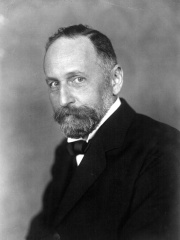
10. Richard Willstätter (1872 - 1942)
With an HPI of 77.35, Richard Willstätter is the 10th most famous German Chemist. His biography has been translated into 63 different languages.
Richard Martin Willstätter FRS(For) HFRSE (German pronunciation: [ˈʁɪçaʁt ˈvɪlˌʃtɛtɐ] , 13 August 1872 – 3 August 1942) was a German organic chemist whose study of the structure of plant pigments, chlorophyll included, won him the 1915 Nobel Prize for Chemistry.
People
Pantheon has 112 people classified as German chemists born between 1555 and 1987. Of these 112, 13 (11.61%) of them are still alive today. The most famous living German chemists include Gerhard Ertl, Robert Huber, and Johann Deisenhofer. The most famous deceased German chemists include Emil Fischer, August Kekulé, and Adolf Windaus. As of April 2024, 1 new German chemists have been added to Pantheon including Germar Rudolf.
Living German Chemists
Go to all RankingsGerhard Ertl
1936 - Present
HPI: 72.12
Robert Huber
1937 - Present
HPI: 70.48
Johann Deisenhofer
1943 - Present
HPI: 70.19
Joachim Frank
1940 - Present
HPI: 68.69
Hartmut Michel
1948 - Present
HPI: 68.68
John Polanyi
1929 - Present
HPI: 67.39
Joachim Sauer
1949 - Present
HPI: 66.77
Thomas C. Südhof
1955 - Present
HPI: 63.35
Michael Grätzel
1944 - Present
HPI: 58.93
Benjamin List
1968 - Present
HPI: 58.62
Jürgen Hennig
1951 - Present
HPI: 53.72
Germar Rudolf
1964 - Present
HPI: 46.21
Deceased German Chemists
Go to all RankingsEmil Fischer
1852 - 1919
HPI: 80.82
August Kekulé
1829 - 1896
HPI: 79.36
Adolf Windaus
1876 - 1959
HPI: 78.89
Ernst Chain
1906 - 1979
HPI: 78.79
Eduard Buchner
1860 - 1917
HPI: 78.78
Friedrich Wöhler
1800 - 1882
HPI: 78.43
Carl Wilhelm Scheele
1742 - 1786
HPI: 78.35
Hans Adolf Krebs
1900 - 1981
HPI: 78.34
Otto Hahn
1879 - 1968
HPI: 78.04
Richard Willstätter
1872 - 1942
HPI: 77.35
Adolf von Baeyer
1835 - 1917
HPI: 76.52
Adolf Butenandt
1903 - 1995
HPI: 76.38
Newly Added German Chemists (2025)
Go to all RankingsOverlapping Lives
Which Chemists were alive at the same time? This visualization shows the lifespans of the 25 most globally memorable Chemists since 1700.

